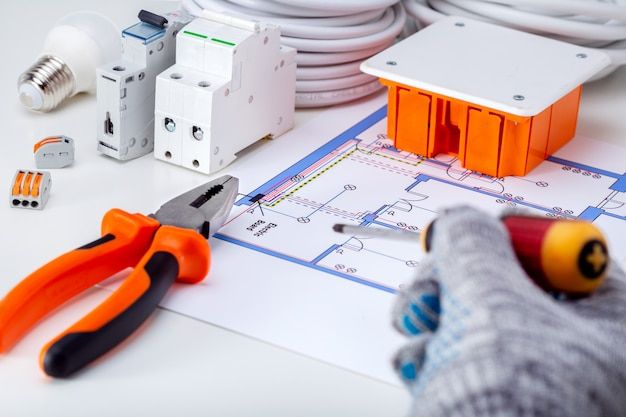
People usually struggle with creating an accurate Electrical Estimate for Residential construction projects. Amateurs and experts both can make mistakes in predicting the future expenses of a project. You are creating a cost plan for a building that is going to be built maybe months after your plan. The market prices can fluctuate within that period. So how can you achieve accuracy in such a situation?
Guide to Electrical Estimate for Residential
Follow these beginner-friendly steps to create an electrical estimate for residential jobs. Remember, there are no shortcuts to precision.
1) Assess the Scope of the Project
Most contractors usually rush the estimation process due to the limited period. But it’s crucial to carefully read the requirements of the project. What type of building is it? What is the purpose? Are there any special requirements?
For more clarity, one can hold meetings with the client and ask various questions.
2) Quantify Materials
Takeoff includes knowing about the exact quantity of materials used in construction. Take accurate measurements of the construction site or go through the blueprints to quantify material. Material cost estimation largely depends on the accuracy of material takeoff.
Residential Electrical Estimating Services such as SMA Estimating LLC, use software for precise takeoff. These software are free from human error and come up with quick results. Some examples include:
- Mc Cormick System
- Con Est
- Trimble
- Planswift
- Bluebeam
- Stack
- Quest Estimating
- On Screen Takeoff
- Xactimate
What Should be Included in Electrical Takeoff?
- Conduits
- Conductors
- Outlets
- Jacks
- Transformer
- Cables and wires
- Security system
- Fire suppression system
Your takeoff sheet should include unit price and wastage too.
3) Calculate Material Expenses
After the quantification of the material, it’s time to calculate the material cost. For achieving accuracy in electrical estimates for residential plans, it’s vital to assess material cost accurately. Material may make up 40-55% of the entire budget!
You can visit the marketplace to get an idea about the exact prices. One thing to note is that market prices can change over time so it’s important to get the current price.
4) Estimate Labor Expenses
Labor cost for residential projects is comparatively low as compared to larger buildings such as industrial ones.
Labor electrical estimate for residential buildings usually depends on:
- Time taken to complete the project
- Type of project. Is it installation, repair, or remodeling work?
- Number of workers needed
- Are they charging a flat rate or an hourly rate?
5) Calculate Equipment Cost
Equipment is required to bring the project to completion. It’s important to account for both the rental and purchase costs of equipment. Moreover, for a precise estimate, consider the wear and tear expense of equipment. Sometimes, it can be worn out or break down during the process of construction. So make sure to include equipment maintenance costs as well.
6) Make a Contingency Plan
A Construction cost Estimating Company always includes a contingency plan in its budget. A contingency plan is created to encounter any hidden or unforeseen expenses of construction. Some examples include:
- Clients change their minds in the middle of the construction process
- Labor makes a mistake
- There are unexpected time delays
- Unfavorable weather conditions
There could be many instances and unexpected situations that may affect the cost. It’s impossible to control every little thing but one can make a contingency plan. Professional estimators usually include 15-20% of the entire budget as a contingent.
7) Include Indirect Construction Costs
So far we have talked about direct expenses of construction. One also needs to include indirect cost expenses. Some examples include:
- Permits and Inspection
- Advertisement and Marketing cost
- Transportation fee
- Utility Bills
- Administrative expenses
- Office Supplies
- Legal Costs
Electrical Estimate for Residential Plans Tips
Here are some Electrical Estimates tips for Residential projects:
- Historical data can be used for a quick analysis of cost. But do not depend on it too much.
- SMA Estimating LLC uses real-time pricing guides such as RS Means for zip code-based accurate prices. It may be too expensive but you can consider using it too.
- Always negotiate the cost with suppliers and purchase in bulk. It helps to reduce costs.
- You can also outsource work to other reliable estimating services.
To Conclude
Creating an electrical estimate for residential projects is not an impossible task. It is very achievable if one is careful in their planning. Many professional cost calculators find it easier to make a list of each and everything. It helps to keep track of things and project management increases. Another option is to outsource your work to another cost-estimating agency. It’ll get you a quick and accurate estimate without lifting a finger and make it easier to bid on projects.





Leave a Reply